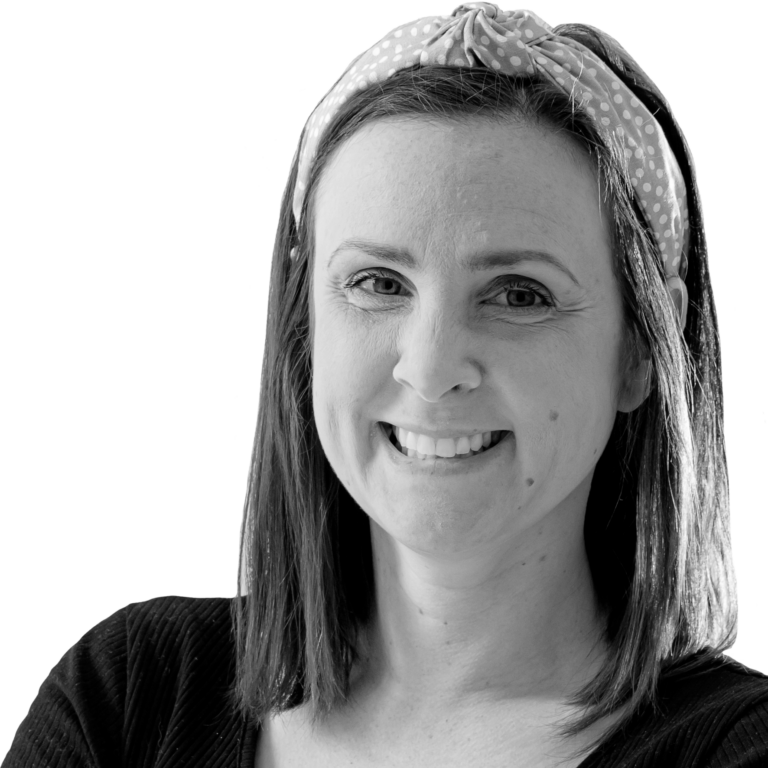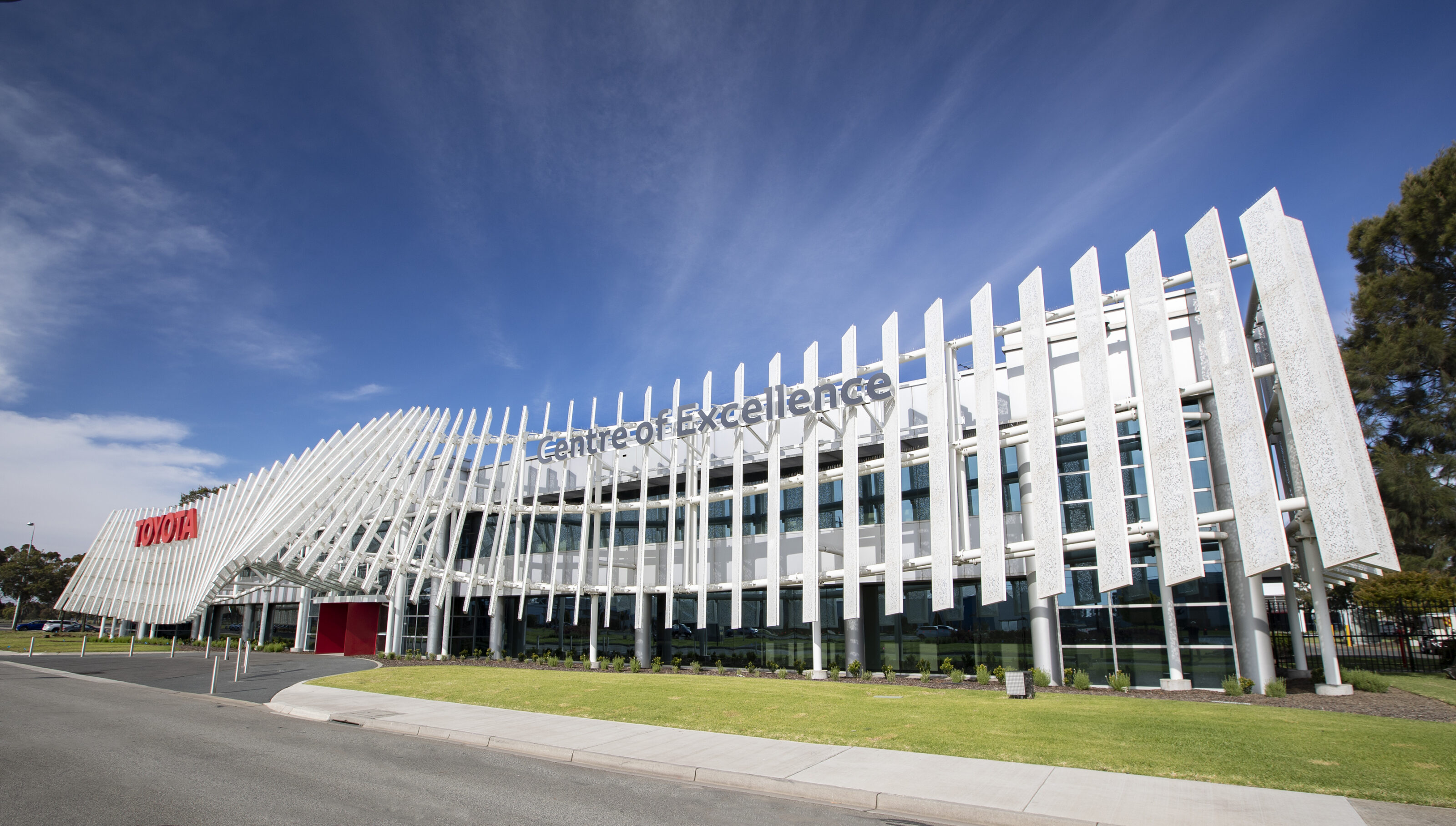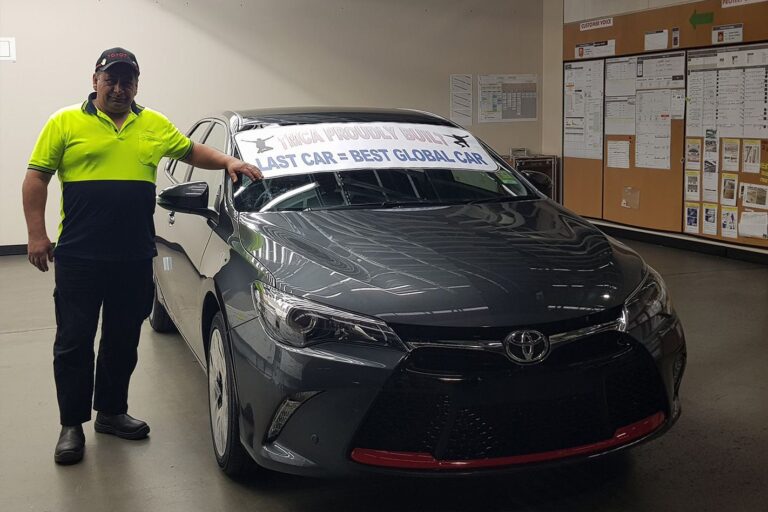Key Points
- $40 million Product Centre opens in Altona
- Design, evaluation and accessory teams brought together
- Creates products for Australian and global markets
Toyota Australia has officially opened a brand-new Product Centre in Melbourne – bringing its design, evaluation and accessory teams together for the first time.
The new $40 million Product Centre, based at its Centre of Excellence (CoE) facility in Altona in Melbourne’s west, focuses on designing and developing unique products for both the Australian and global markets.
These teams were behind such models as the HiLux Rugged X and HiLux Rogue, as well as vehicles such as the Sportivo Coupe concept car.
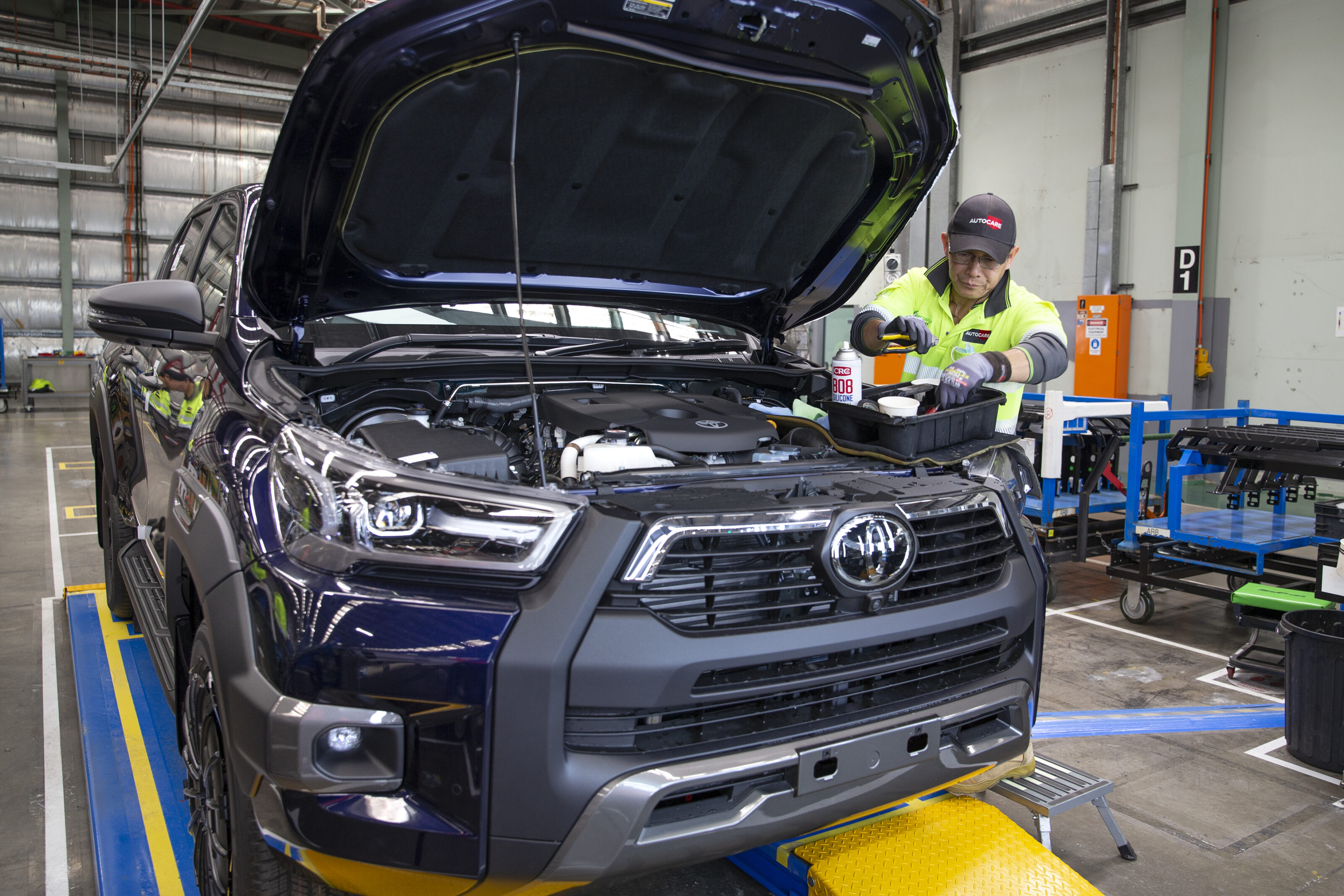
Toyota Australia’s Vice President for Product, Guest and Aftersales Operations, Mike Rausa, said the new facility keeps jobs, skills and career paths grounded in Australia following the conclusion of the firm’s local manufacturing four years ago.
“We’ve already seen what our planning and development teams are capable of, with vehicles like the HiLux Rugged X and HiLux Rogue proving to be popular here in Australia and creating accessories that are adopted in markets around the world,” Rausa said.
“We wanted to retain and build on the capability developed during our long history of vehicle manufacturing, providing a highly collaborative environment that would allow Australian design and engineering expertise and know-how to be utilised within the broad Toyota family.”
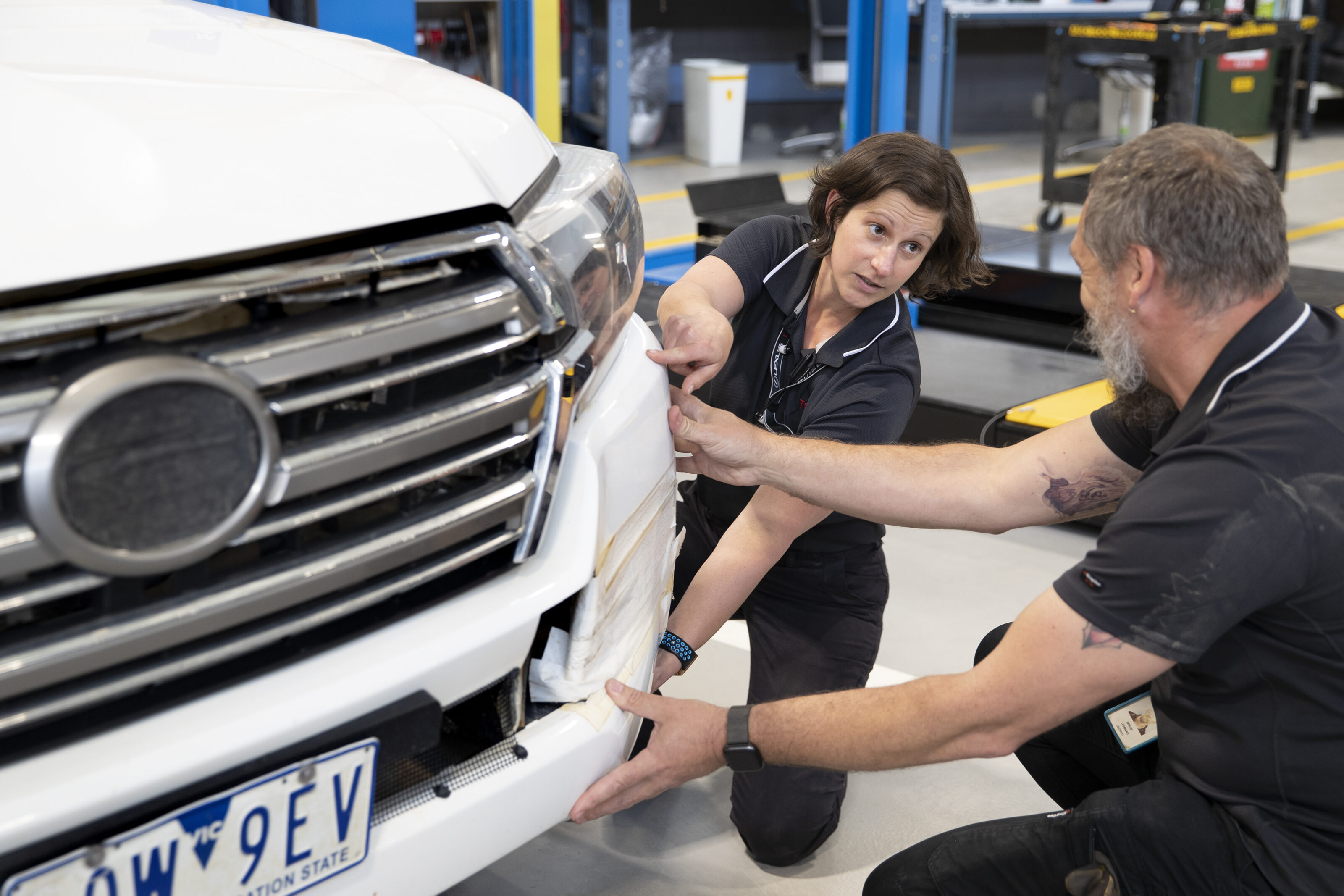
The new facility is based at the sprawling 22-hectare Altona site, which is also home to a 1.4 kilometre-long Autodrome test track, a 55,000m2 space dedicated to making 26,000 parts daily for dealerships, and the hydrogen production and refuelling centre.
The Toyota Conversions (T-Con) department, which serves as a full assembly line for adding bespoke components to the HiLux Rugged X and HiLux Rogue once shipped from the factory in Thailand, is located there too.
According to Toyota, it was important that the fresh facility should retain ties to the carmaker’s manufacturing past – with the new centre built inside the former powertrain production building, which made more than 2.5 million engines between 1978 and 2017.
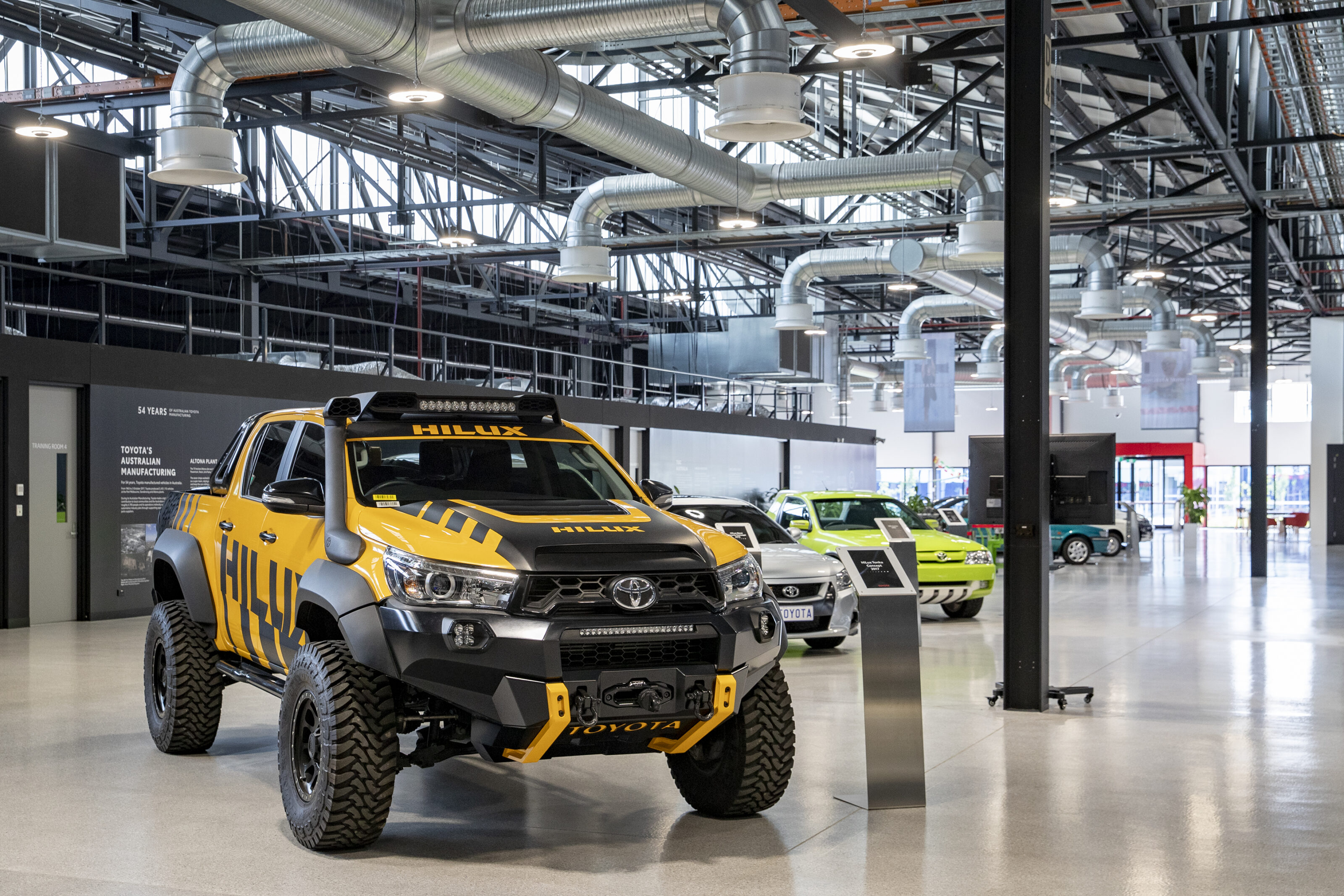
Toyota Australia Product Planning and Development General Manager Rod Ferguson told media during a tour this week that the highly-skilled teams based there are highly utilised by other parts of the business around the world, and can now work even more efficiently by being centred together.
“Having previously been based at multiple facilities around Melbourne, consolidating the product teams on one site in a state-of-the art facility, alongside other business functions, will foster a level of collaboration that hasn’t been possible before.”
Find out more about the work that goes on at the Product Centre below.
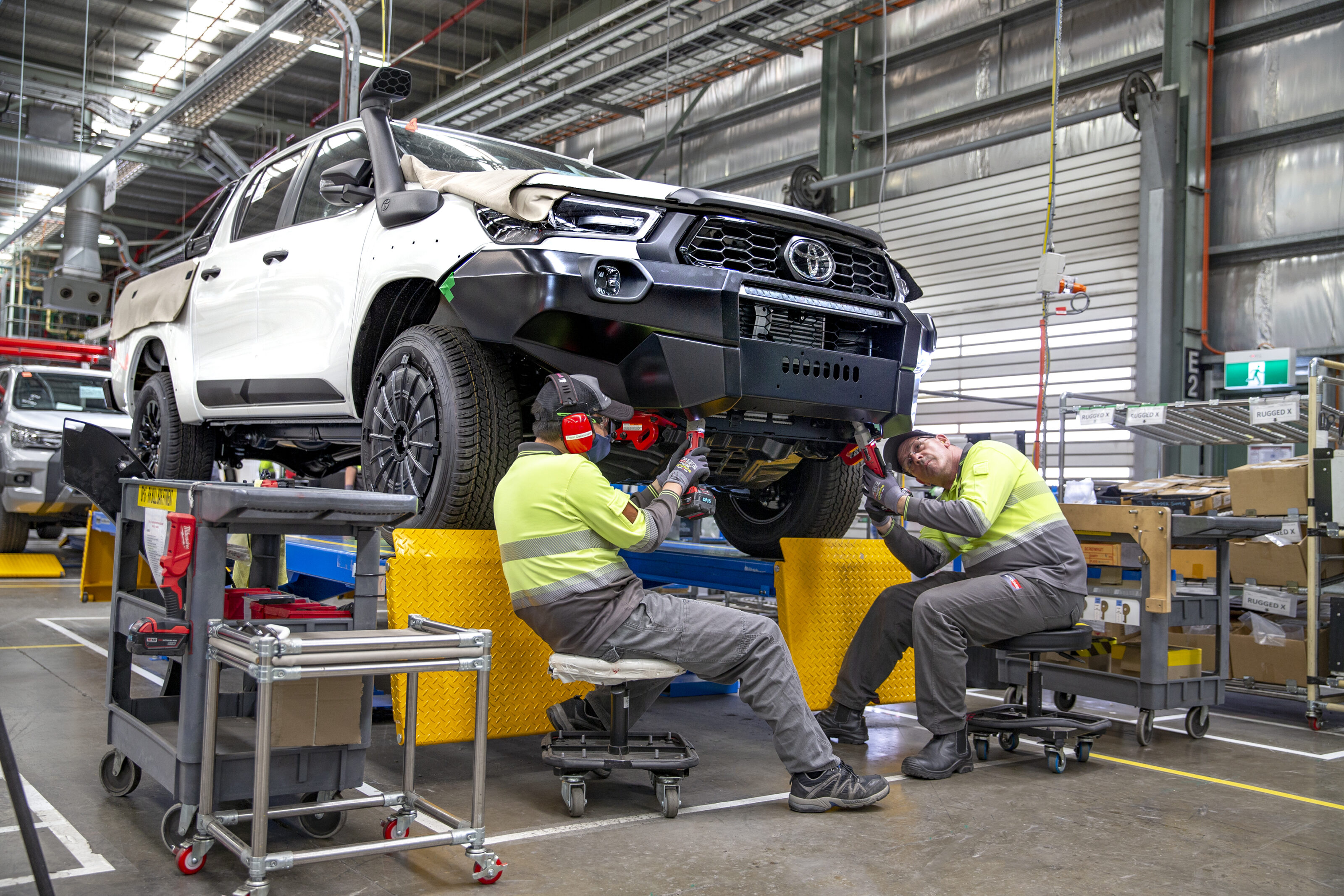
What does the Conversions and Accessories team do?
With nearly 40 employees on site, C&A creates accessories not only for the Australian market, but also for export to other markets including New Zealand, Europe and South Africa.
As one of 13 global centres for Toyota Genuine Accessories, the C&A team is responsible for producing a wide range of tough and durable accessories for multiple models, including the recently launched all-new LandCruiser 300 Series.
Another such product is the electric roller cover standard on the HiLux Rogue, which was created here in Australia and is also offered in South Africa and Europe.
Although the team’s work focusses on 4WD vehicles that have higher rates of accessory fitment, the C&A team also develops accessories for passenger cars, SUVs and Lexus vehicles.
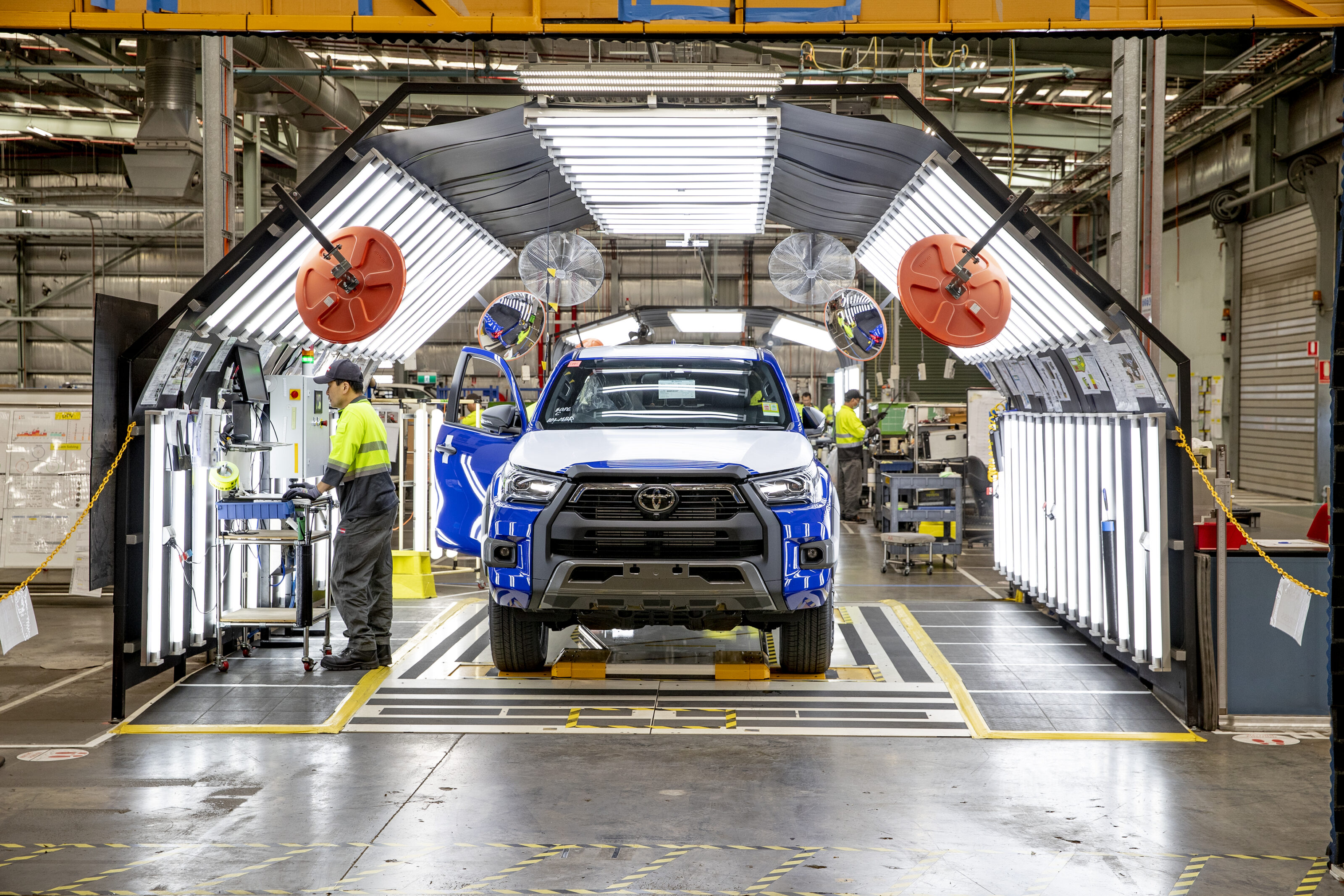
Th new centre also has a range of high-tech equipment at the team’s disposal, such as environmental chambers that can simulate extreme hot and cold temperatures – as well as high and low humidity conditions.
Millions of cycles of vibration tests are carried out, mimicking road corrugations to ensure accessories like bull bars can cope with the physical rigours of outback travel.
The team collects and logs data using strain gauges to measure the amount of stress being put on not only the accessories like bull bars, nudge bars and antennas, but also the vehicle itself to ensure they provide protection and integration for the entire vehicle.
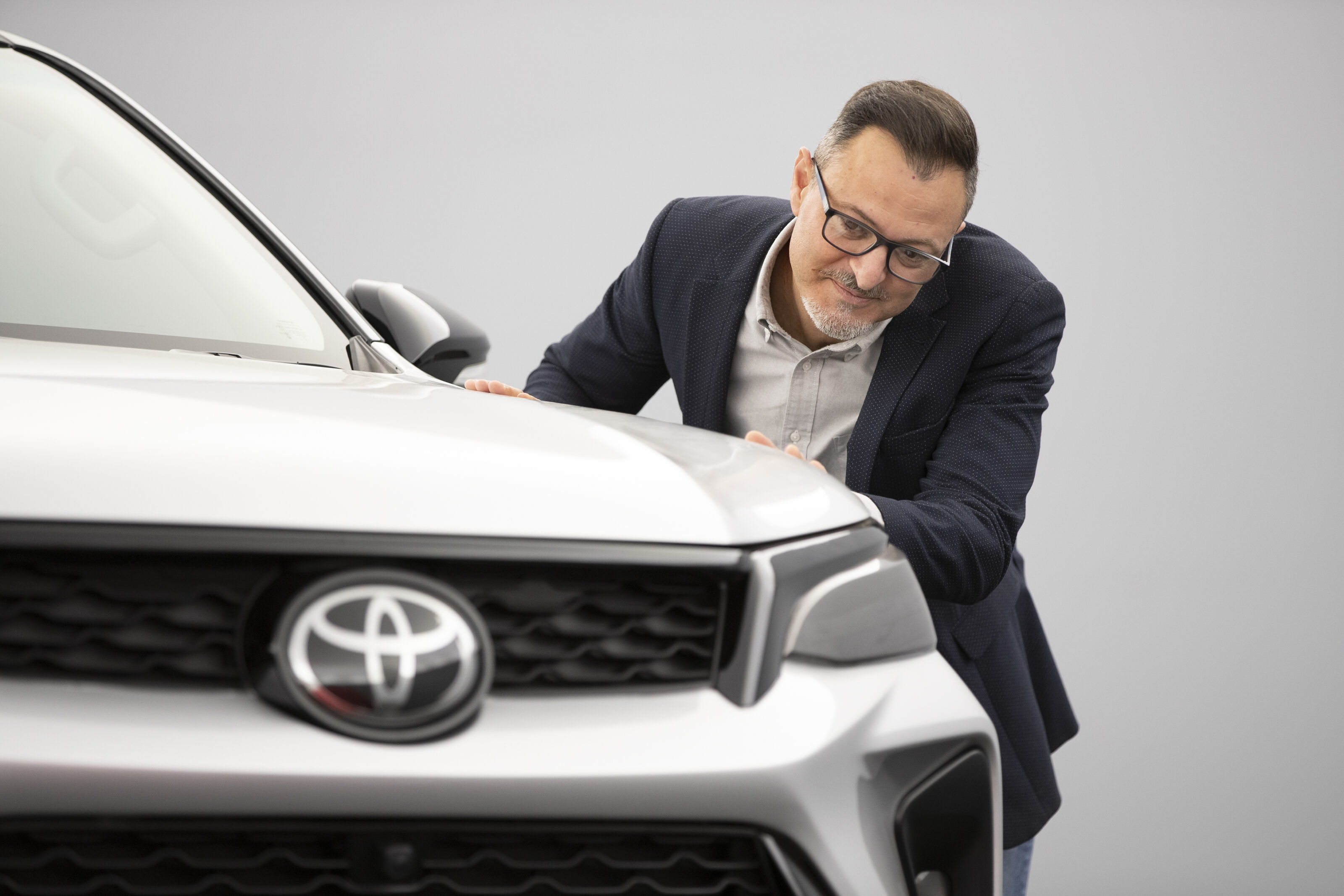
What does the Product Design team do?
The Product Design department has 42 staff, who have recently relocated from Toyota’s headquarters in Port Melbourne and are now based in what was once the engine plant.
At the centre of this is the indoor viewing area – a bespoke, controlled environment with three turntables. Featuring studio-quality diffused lighting and high, curved ceilings, it can be used to evaluate new designs – and there’s an outdoor viewing area too for when natural daylight is required.
The new design studio features two full-size modelling plates and plays home to the creative designers and studio engineers, as well as clay and digital modellers, who combine traditional, hand-based design methods with virtual techniques to work on a variety of prototypes.

Key to this is two full size, 5 axis CNC milling machines and 10 3D printing machines, with traditional metal and wood fabrication functions now also bolstered with digital methods utilising computer-controlled programming. Finishing work is done in an environmentally friendly spray booth, using the latest waterborne technology.
Product Design not only works on local development, but partners with Toyota Technical Centres around the world, particularly in the Asia Pacific region – with products styled in Australia making their way to most corners of the globe.
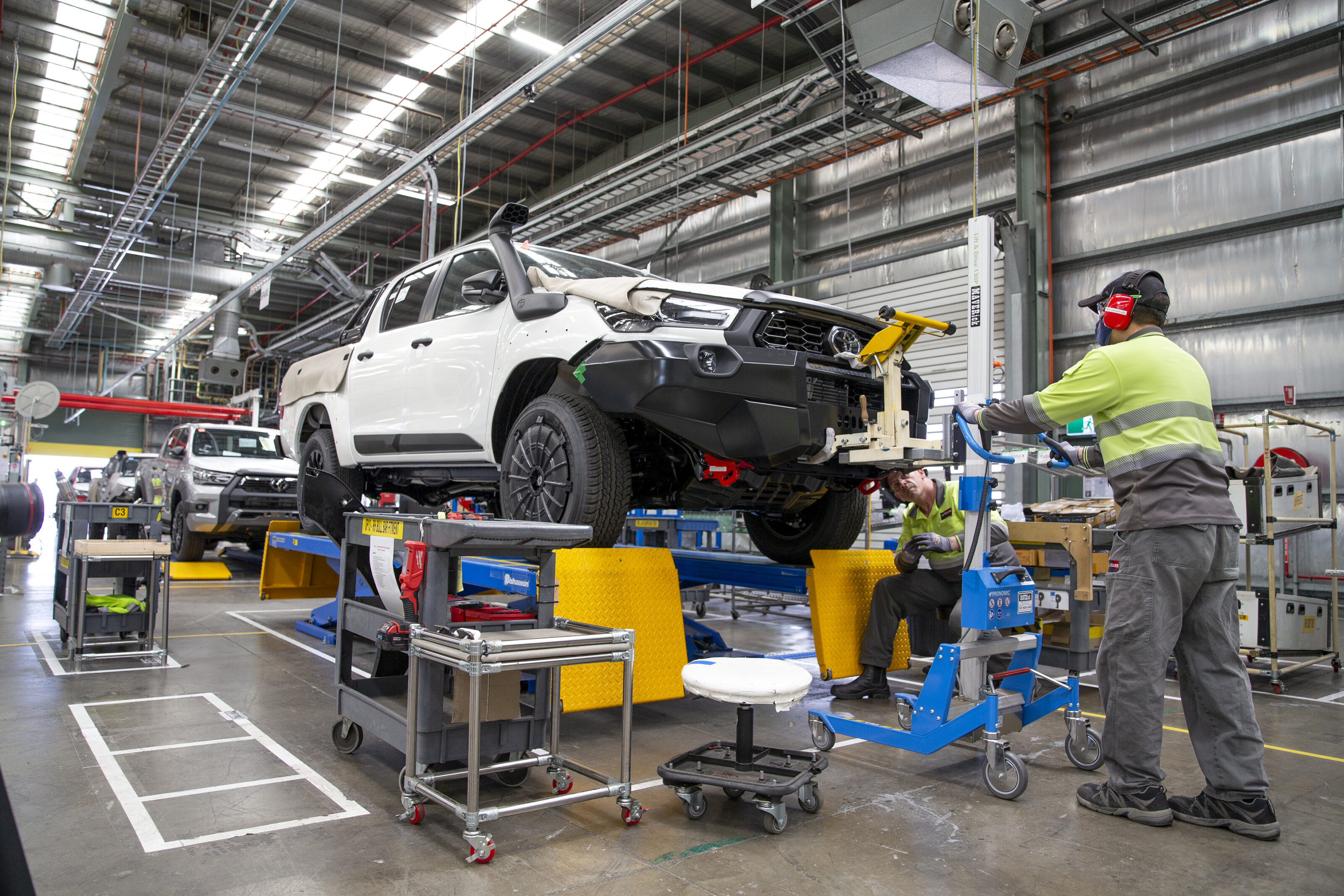
What does the Vehicle Evaluation team do?
With 80 per cent of global road conditions available for testing in Australia, Toyota Australia says its Vehicle Evaluation and Development (VED) department is heavily relied upon to provide evaluation and real-world testing for global engineering teams – helping shape models like the LandCruiser, HiLux and Prado.
Developed over 10 years of experience at the previous facility in Notting Hill, the Evaluation team operates out of a new workshop in the Altona Product Centre which features six open work bays, and eight upgraded vehicle hoists rated to 4.5 tonnes.
Along with subjective human feedback from a team of experts, a raft of high-tech equipment is also used, including; steering input robots, a laser wheel aligner, a shock absorber dynamometer, and unique measurement machines developed in-house.
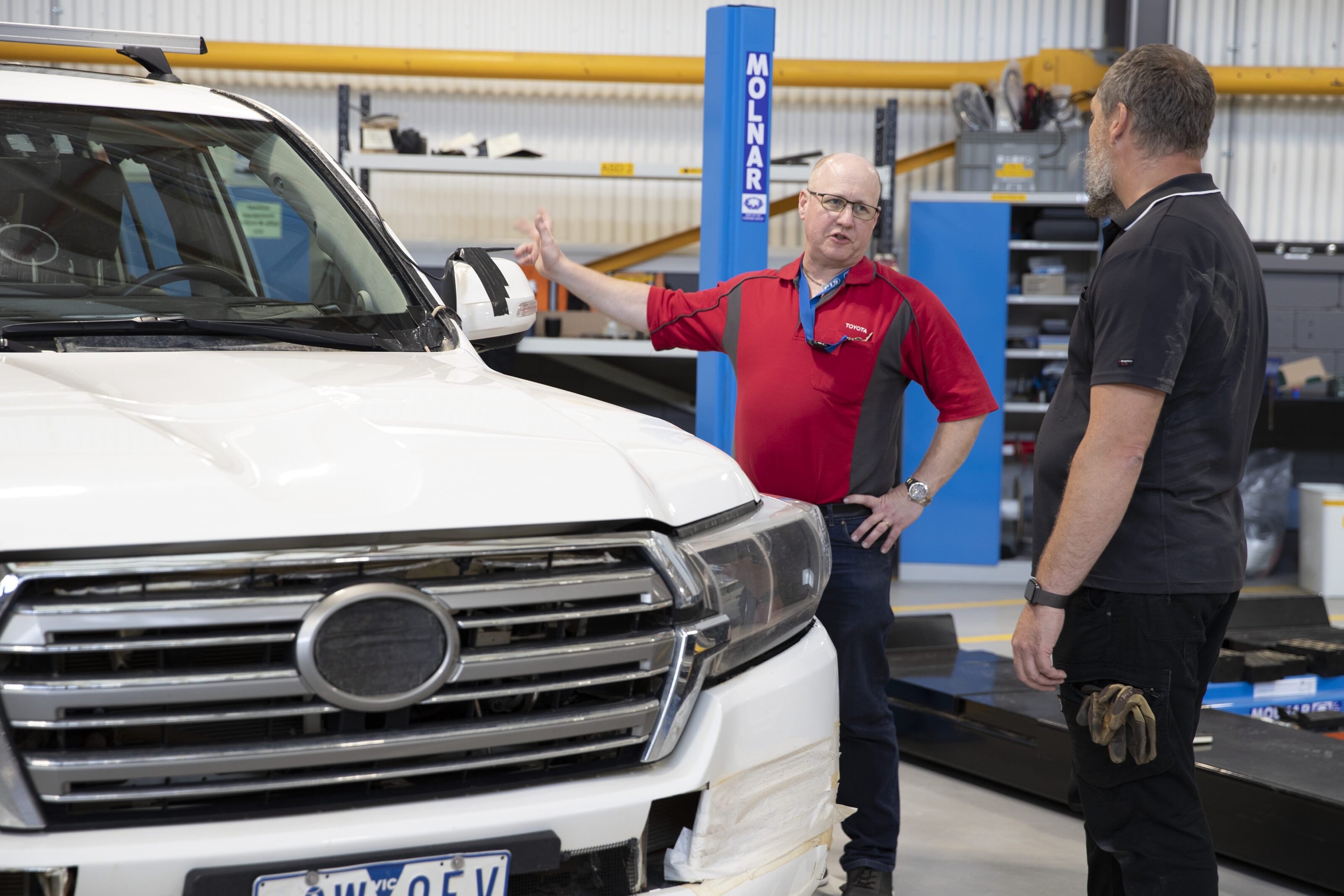
A bespoke suspension articulation rig developed in-house by the team provides accurate articulation and centre-of-gravity measurements, while a leaf-spring compressor created by colleagues in Product Design provides further unique suspension testing capabilities.
Toyota’s Manager for Research, Evaluation and Training, Ray Munday, said local testing and evaluation means the firm’s 4WDs are capable of standing the test of time in the harshest of Australian environments.
“Being one of the oldest geological countries on the planet, we have conditions that are some of the most unique in the world, and these are hard to replicate in a test lab,” he added.
For example, local work on the LandCruiser 300 Series began all the way back in 2014, with the team ensuring the all-new off-roader was built to withstand Australian customer usage – such as off-road driving, towing in high temperatures and high accessory fitment.

